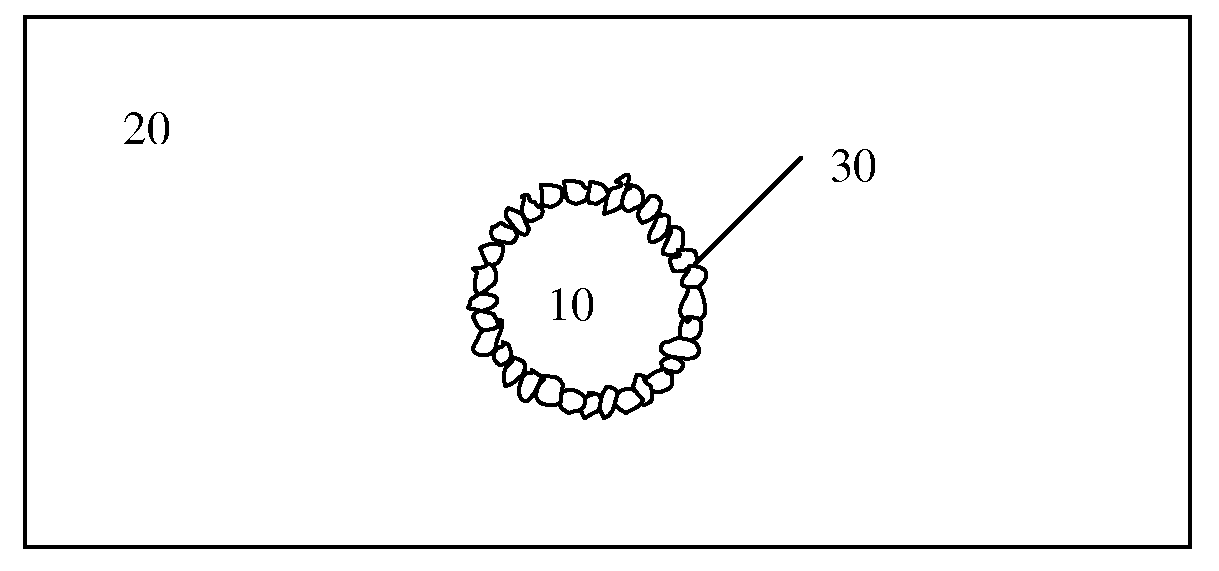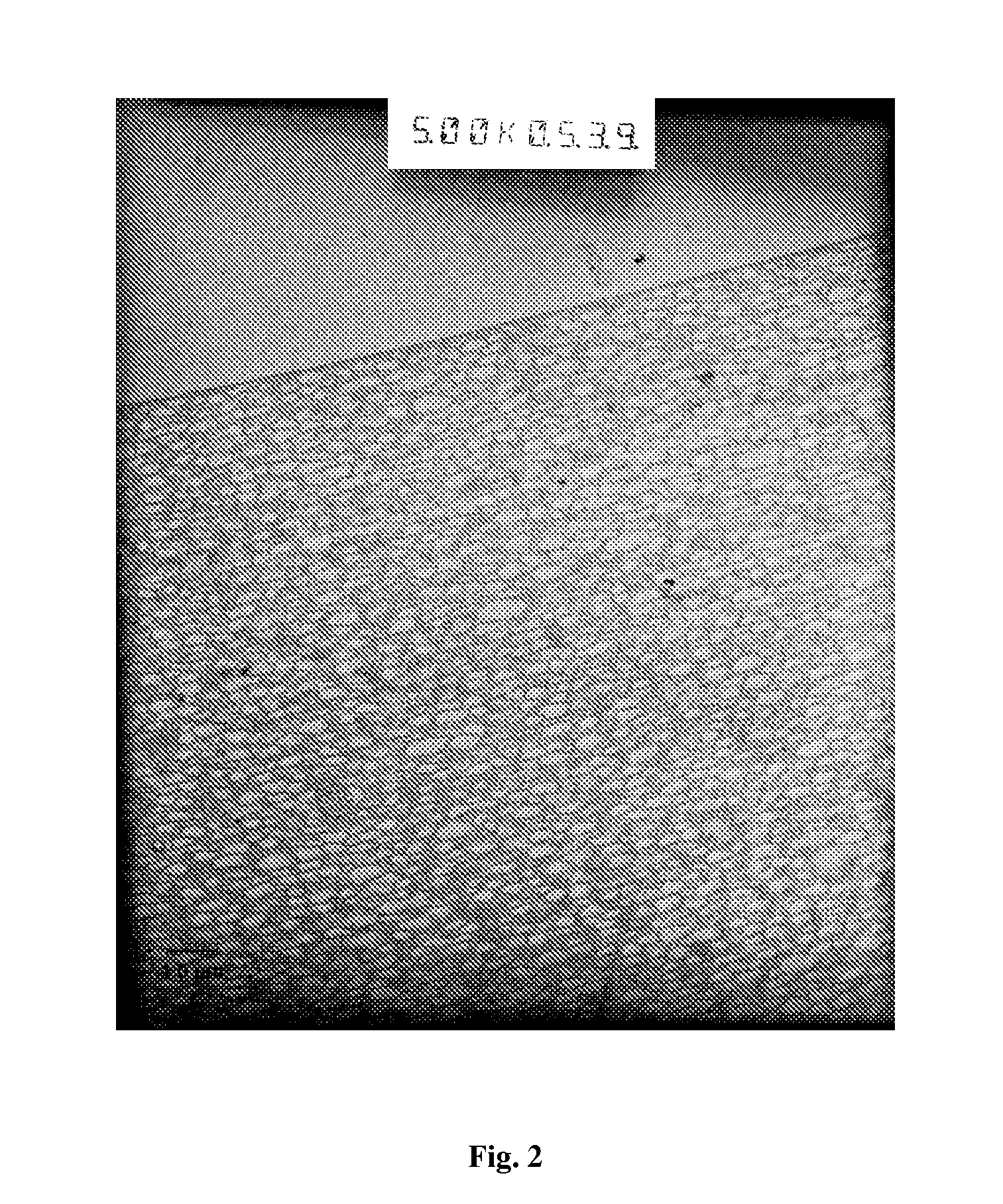Pickering emulsions, aqueous dispersions of polymeric particles, coatings, and particle networks formed therefrom
a technology of polymer particles and emulsions, applied in the direction of liquid surface applicators, coatings, etc., can solve the problems of stability problems, negative impact on the resultant coating film properties, and inability to meet the requirements of certain applications
- Summary
- Abstract
- Description
- Claims
- Application Information
AI Technical Summary
Problems solved by technology
Method used
Image
Examples
example 1
[0091]A mixture of 107.57 grams of Snowtex-O and 46.57 grams deionized water were placed in a beaker. A monomer mixture was prepared in a separate vessel by mixing 21.50 grams methyl methacrylate, 15.05 grams butyl acrylate, 6.02 grams butyl methacrylate, 4.30 grams 2-hydroxyethylmethacrylate, 0.43 grams acrylic acid and 31.45 grams Cymel 1156 (a butylated melamine formaldehyde resin commercially available from Cytec Industries). The monomer mixture was then added with stirring at room temperature to the aqueous phase. The mixture was stirred for 10 minutes and then treated with an ultrasonic probe for 10 minutes to form the emulsion. The emulsified material was then placed in a flask, sparged with nitrogen, and warmed to 30° C. Following this, a mixture of 0.22 grams isoascorbic acid and 1.2 milligrams ferrous ammonium sulfate in 4.22 grams deionized water was added. After a 10 minute hold, the nitrogen sparge was switched to a nitrogen blanket and the dropwise addition of an initi...
example 2
[0092]A mixture of 71.54 grams of Snowtex-O and 254.39 grams of deionized water were placed in a beaker. A monomer mixture was prepared in a separate vessel by mixing 48.00 grams methyl methacrylate, 68.57 grams butyl acrylate, 13.71 grams ethylhexyl acrylate, 5.71 grams 2-hydroxyethylmethacrylate, 3.43 grams acrylic acid, 29.71 grams Dowanol PM, 89.14 grams of a polyester resin (30.47% 1,4-cyclohexanedicarboxylic acid, 2.11% maleic anhydride, 12.59% isophthalic acid, 4.04% ethylene glycol, 20.79% 1,3-butylene glycol, 30% xylene), and 0.82 grams of Luperox A75, which is an organic peroxide commercially available from Elf Atochem North America, Philadelphia, Pa.). The monomer mixture was then added with stirring at room temperature to the aqueous phase. The mixture was stirred for 10 minutes and then treated with an ultrasonic probe for 10 minutes to form the emulsion. The emulsified material was then placed in a flask, sparged with nitrogen, and warmed to 30° C. After 30 minutes, th...
example 3
[0093]A mixture of 21.91 grams of Snowtex-O and 55.11 grams deionized water were placed in a beaker. A monomer mixture was prepared in a separate vessel by mixing 21.93 grams methyl methacrylate, 15.35 grams butyl acrylate, 6.14 grams butyl methacrylate, 4.39 grams 2-hydroxyethylmethacrylate, 0.44 grams acrylic acid and 8.58 grams of a polyurethane resin (prepared from MDI, propylene glycol, ethylene glycol monobutyl ether and methyl isobutyl ketone). The monomer mixture was then added with stirring at room temperature to the aqueous phase. The mixture was stirred for 10 minutes and then treated with an ultrasonic probe for 10 minutes to form the emulsion. The emulsified material was then placed in a flask, sparged with nitrogen, and warmed to 30° C. Following this, a mixture of 0.21 grams of isoascorbic acid and 1.1 milligrams of ferrous ammonium sulfate in 4.28 grams of deionized water was added. After a 10 minute hold, the nitrogen sparge was switched to a nitrogen blanket and th...
PUM
| Property | Measurement | Unit |
|---|---|---|
| diameter | aaaaa | aaaaa |
| spherical diameter | aaaaa | aaaaa |
| spherical diameter | aaaaa | aaaaa |
Abstract
Description
Claims
Application Information
 Login to View More
Login to View More - R&D
- Intellectual Property
- Life Sciences
- Materials
- Tech Scout
- Unparalleled Data Quality
- Higher Quality Content
- 60% Fewer Hallucinations
Browse by: Latest US Patents, China's latest patents, Technical Efficacy Thesaurus, Application Domain, Technology Topic, Popular Technical Reports.
© 2025 PatSnap. All rights reserved.Legal|Privacy policy|Modern Slavery Act Transparency Statement|Sitemap|About US| Contact US: help@patsnap.com



